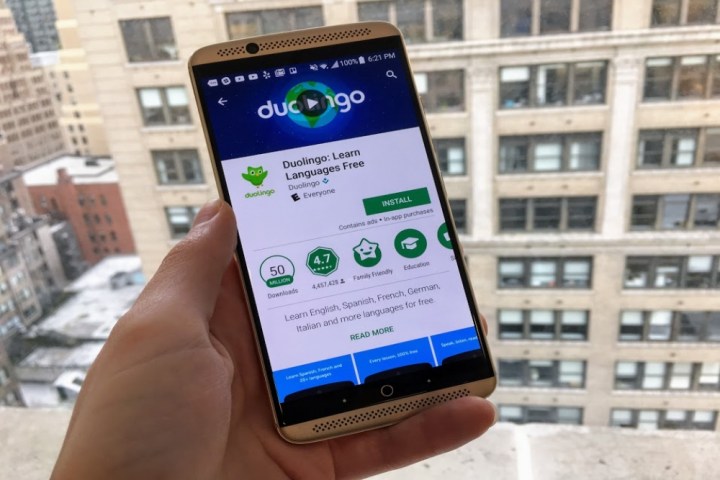
“This is by far the most requested and highly anticipated course launch in Duolingo’s five-year history, Luis von Ahn, co-founder and CEO, said in a statement. “No matter what we’d share on social media, tons of people would respond with, ‘That’s nice, but when are you launching Japanese?'”
The inherent complexity of the Japanese language, which the Duolingo team said necessitated the development of a “completely new way to teach,” made it challenging to adapt to Duolingo’s existing app and web formats. The solution was a holistic curriculum that covers all three Japanese writing systems: Hiragana, Katakana, and Kanji.
“While some courses get away with using only Romaji, the representation of Japanese sounds using the Western alphabet, learning all three [forms] helps people communicate more effectively,” Duolingo said.
Duolingo’s Japanese course walks beginning speakers through all Hiragana characters (about 50 in all), 50 Katakana characters, and 100 basic Chinese Kanji characters. They’re divided into themes like travel, food, and hobbies, all of which consist of a “practical mix” of vocabulary and grammar. You’ll find questions pertaining to the 2020 Tokyo Olympics, for example, as well as popular Japanese subculture like anime.
Duolingo said the new course teaches all the vocabulary and grammar you need to pass the JLPT N5, a popular Japanese language proficiency test. And it abides by the JF Standard, a Japanese-language education framework for describing language ability.
“As a native Japanese speaker, it was an honor to help build this course so that millions of people can learn the language,” Hideki Shima, a senior software engineer at Duolingo, said in a press release. “I’m also proud that we created new formats and content to ensure the course’s effectiveness.”
Duolingo’s new Japanese course follows the introduction of a “language assistant” for iOS. The “Duolingo bot.” Much like the chatbots in Facebook Messenger, Microsoft Skype, and Google Assistant, it responds to language questions conversationally, providing corrections and suggesting responses where appropriate. It’s also smart enough to ramp up the complexity as you progress in a language.
It comes on the heels of Tinycards, a Duolingo’s AI-powered take on flash cards. The app is designed to teach math, science, geography, history, and more — you unlock levels as you go, and fill up a strength bar by answering cards correctly.
Duolingo is launching Tinycard decks for Hiragana and Katakana alongside the new course.
Duolingo, an outgrowth of a Carnegie Mellon University project that tasked students with translating basic words and phrases, now counts more than 170 million people among its active users. It was named the Best Education Startup at the 2014 Crunchies, and was the most downloaded app in the education category in Google Play in 2013 and 2014.
Download for iOS Download for Android








